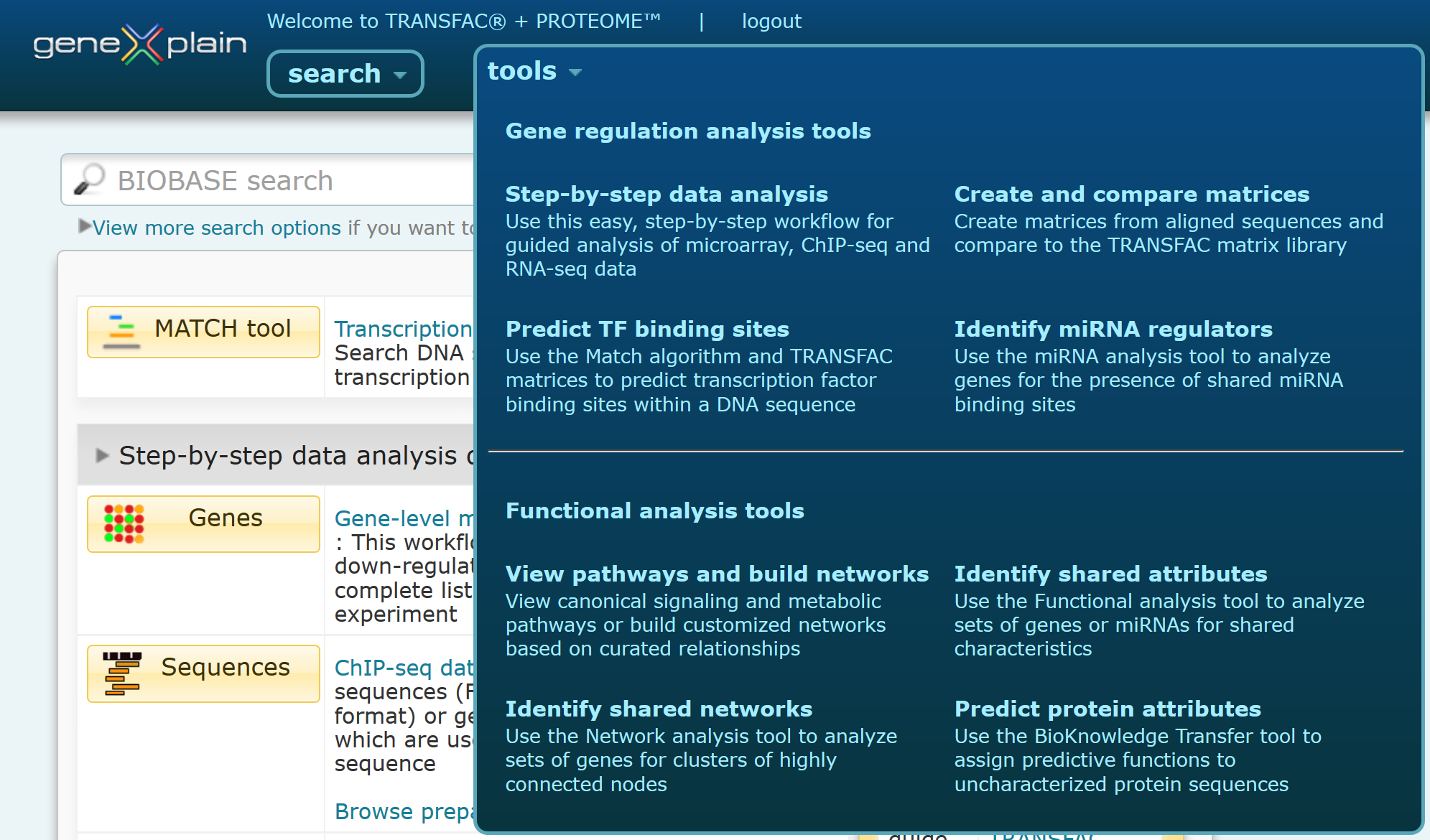Introduction to BKL Tools for Functional Analysis
BKL Functional Analysis Tools comprise powerful specialized tools for analyzing customized lists of genes using BKL annotation, visualizing pathways and building networks. Brief descriptions of the BKL Functional Analysis Tools are provided below, with hyperlinks to detailed information. A view of the interface used to access BKL Functional Analysis Tools is shown in the figure below.

Functional Analysis Tool Menu
View pathways and build networks
Use the PathFinder visualization tool to view canonical
signaling and metabolic pathways and to build custom
protein-protein interaction and gene regulation networks based on
the curated data made available in the BKL.
Learn more about the
PathFinder.
Identify shared attributes
Use the Functional Analysis tool to analyze a list of genes or
miRNAs for the presence of statistically over-represented, curated
attributes. The output is a list of curated attributes spanning up
to eight different topics including GO molecular function, GO
biological process, associated diseases, canonical pathways and
more.
Learn more
about the Functional Analysis tool.
Please note: The Functional Analysis tool is available, both, by subscription to the PROTEOME as well as by subscription the TRANSFAC module, but for some species the number of genes included in TRANSFAC may be less than the number of genes included in PROTEOME.
Identify shared networks
Use the Network Analysis tool to analyze a list of genes for the
presence of network clusters. The output is a list of protein
interaction networks based on BKL curated data. These networks can
be visualized, further edited and exported for publication via the
linked BKL Pathfinder tool.
Learn more
about the Network Analysis tool.
Please note: The Network Analysis tool is only available by subscription to the PROTEOME module.
Predict protein attributes
Use the BioKnowledge Transfer tool to assign predictive
functions to submitted protein sequences based on domain structure
and sequence similarity to more than 200,000 proteins spanning more
than 20 species.
Learn more about the
BioKnowledge Transfer tool.
Contact us at support@genexplain.com